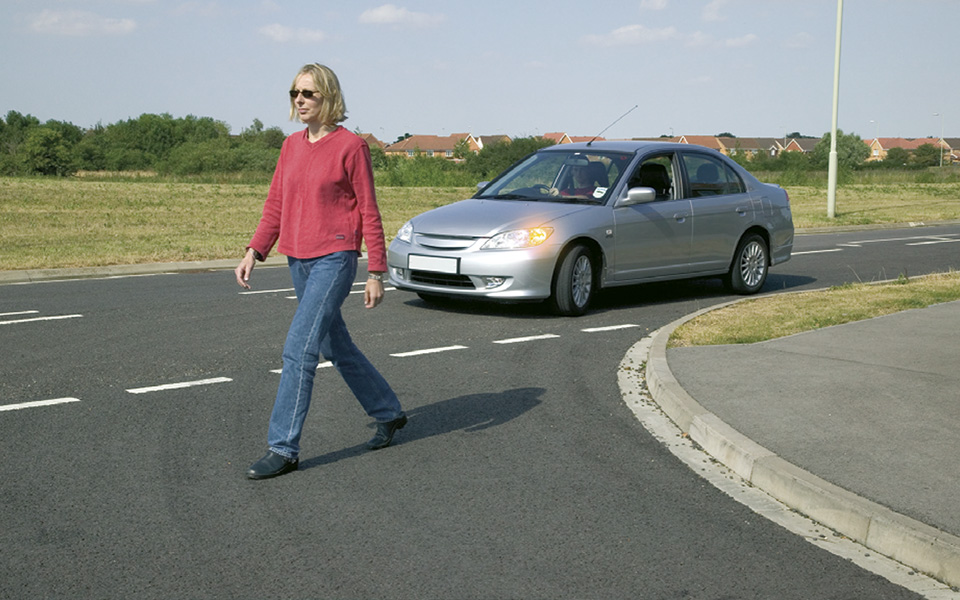Does anyone know why Toronto is so anti-round-about? Is there an official policy about bringing everyone to a complete stop always where two rights of way intersect?
O'Conner and Woodbine would have been perfect before the recent Elmer-the-Safety-Elephant makeover.
It's a very good question. I brushed up a bit on my understanding of roundabouts in Ontario before my last post just prior, and most of the reference is from Waterloo Region. And yet Toronto has had roundabouts for at least a generation (as distinct from 'traffic circles' which have existed here for well over half a century).
The oldest one I'm aware of is on Windermere in Swansea. Just looking at it now, I see that it isn't a 'classic' one as is now being used in Waterloo, but it does something very clever I never realized before seeing it from above:
https://www.google.ca/maps/place/To...23555502ab4c477!8m2!3d43.653226!4d-79.3831843
It's more like an inverse railway roundhouse than a classic roundabout. Note how it services a 'by-pass' for the original Windermere Ave and also St Olave's Rd and a driveway.
I don't have the references up on my taskbar that I did earlier, but IIRC notable in Waterloo's case is the *increase* in accidents (mostly on initiation of the roundabout) but the *severity* of accidents was vastly reduced. Almost all were scrapes and bumps, no T-bones, no head-ons. Pedestrian safety takes on a new impetus however. Europe has long ago accepted the need for pedestrian underpasses at them. Waterloo's impression is very favourable, but unless addressed in the HTA in the last while, there is no provision in the HTA for roundabouts.
I'll dig deeper on those facets later, and Toronto's official stance. I seem to recollect Toronto leaning toward implementing them. There are very good reasons to doing so.
Edit: Just doing some checking now. One source claims "This is a traffic circle, not a roundabout, as it has stop signs at the junction". Just checked on Google map, that is wrong, they are *yield* signs, technically unnecessary, but a sop to motorists to 'mind their road manners'. In other words, legally redundant but good reminders.
I see also:
https://urbantoronto.ca/forum/threads/roads-roundabouts.8212/
Also:
Roundabouts are one of the best ways to combat traffic congestion, so ...
https://nationalpost.com/.../roundabouts-are-one-of-the-best-ways-to-combat-traffic-con...
Jul 21, 2012 - There are 76% fewer injury collisions at
roundabouts than at ... and another in the west end, connecting
Windermere Avenue, Coe Hill Drive ...
[PDF]
STAFF REPORT INFORMATION ONLY Feasibility ... - City of Toronto
www.toronto.ca/legdocs/mmis/2008/pw/bgrd/backgroundfile-11862.pdf
Mar 25, 2008 - Feasibility and Benefits of
Roundabouts in Toronto. 1. STAFF REPORT .... type
roundabouts. They are located at
Windermere Avenue and Coe.
Later edit: Reading up now, a massive proviso comes to mind from my experience of spending time in the UK, and the eroding ability of UK drivers to use them the way previous generations did:
There's a world of difference between single lane roundabouts and dual lane ones! As an avid distance cyclist, in visits and work sojourns in the UK, I used to have the confidence to zip through roundabouts carefully watching for others' signals, and allowing them to see mine. My last sojourn there a decade or so back...there's no friggin' way I'd cycle through a roundabout...*unless*...it was a single lane one. The *choreograph* necessary to make them work is at least half gone from today's Brits. It's the iGeneration, it's all about them, nothing about everything else, and in that is a massive warning for North Am: They have to be simple, and single lane to work. A majority or close to it of drivers don't signal their turns, and for cyclists, it's a rarity (I actually congratulate the ones that do!) let lone look over their shoulders before lane changing.
The UK also has what are termed "double roundabouts" or "twin roundabouts"...lol...but we won't go there. They take tremendous driver confidence to 'do the dance' and not get their toes crushed doing it. The most important....*crucial* facet is signalling intention. Good luck on that on Toronto roads.
Addendum:
DOUBLE ROUNDABOUT
A single roundabout is often challenge enough for many drivers, especially learners. A double roundabout is of course double the challenge.
Double roundabouts come in both forms, normal roundabouts and
mini roundabouts. Although the same rules apply to both types, a very different approach needs to be taken. You will certainly be taking roundabouts during a driving test and if double roundabouts exits within the driving test routes, there’s a good chance you will be taking these too.
This tutorial offers advice for both normal and mini double roundabouts along with the rules.
The key to dealing with any double roundabout is to deal with both roundabouts separately. Below is a diagram of a large double roundabout. which exits off onto dual carriageways.
We’re going to be following the red car which is following the correct driving test procedure for turning right at the double roundabout. As with normal roundabouts, the
MSPSL (
Mirror,
Signal,
Position,
Speed and
Look routine must be applied. See the
MSPSL driving routine for further information.
[...]
DOUBLE MINI ROUNDABOUTS AND CYCLISTS
Cyclists can often be unpredictable and can often not use arm signals to indicate their change of direction. Always approach mini and double mini runabouts slowly so you can take effective observation. If cyclists are located at the roundabout, use extreme caution and do not try to push past.
https://www.drivingtesttips.biz/double-roundabout.html
These are tips for double roundabouts for a nation of drivers used to regular roundabouts. In the case of Torontonians, this would apply for even the simplest of roundabouts.
Cyclists and pedestrians: Be scared, be very scared....and for God's sake, look and signal. Or preferably, dismount the bike and walk (or run for your life) across as a pedestrian.





